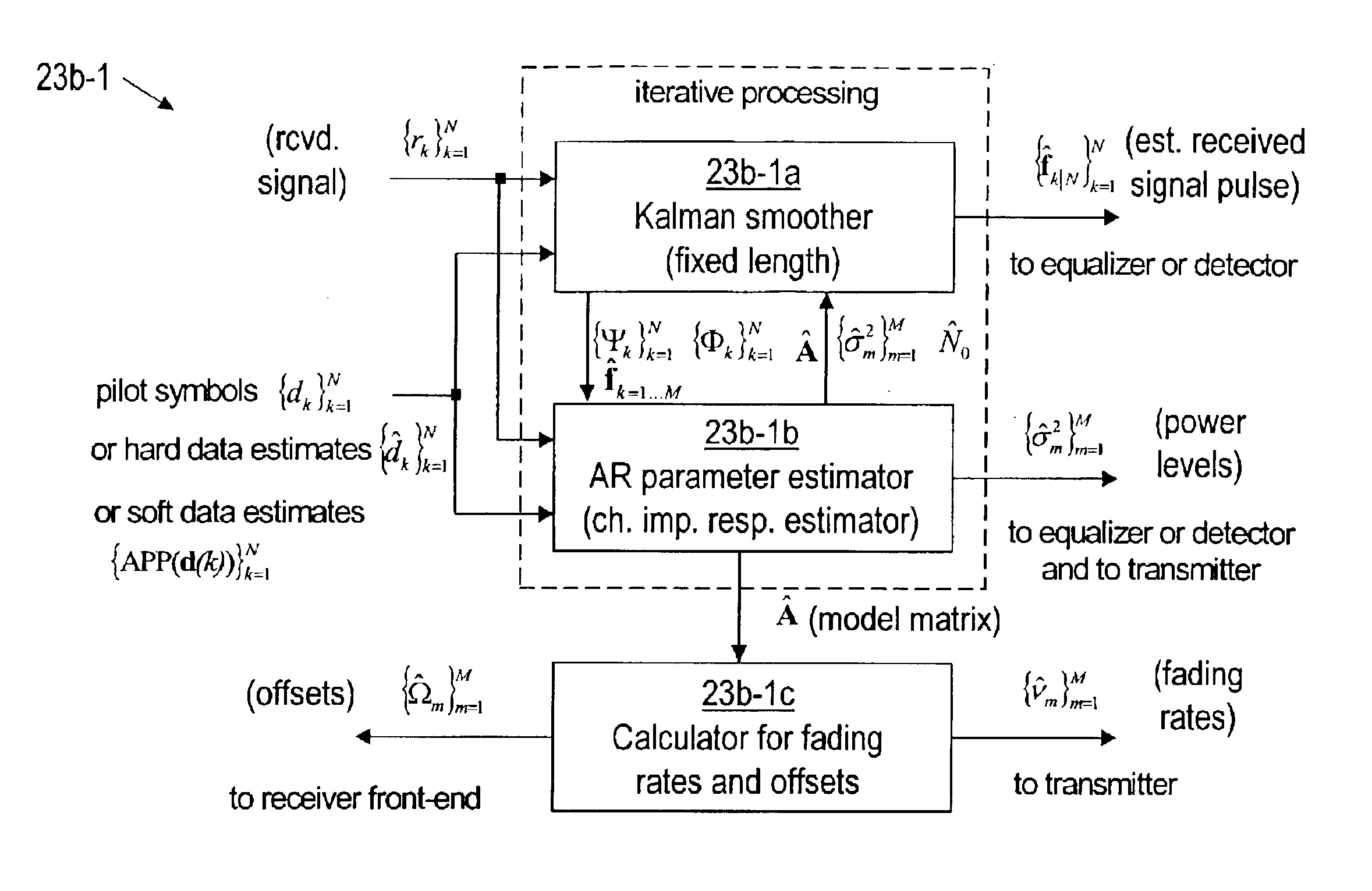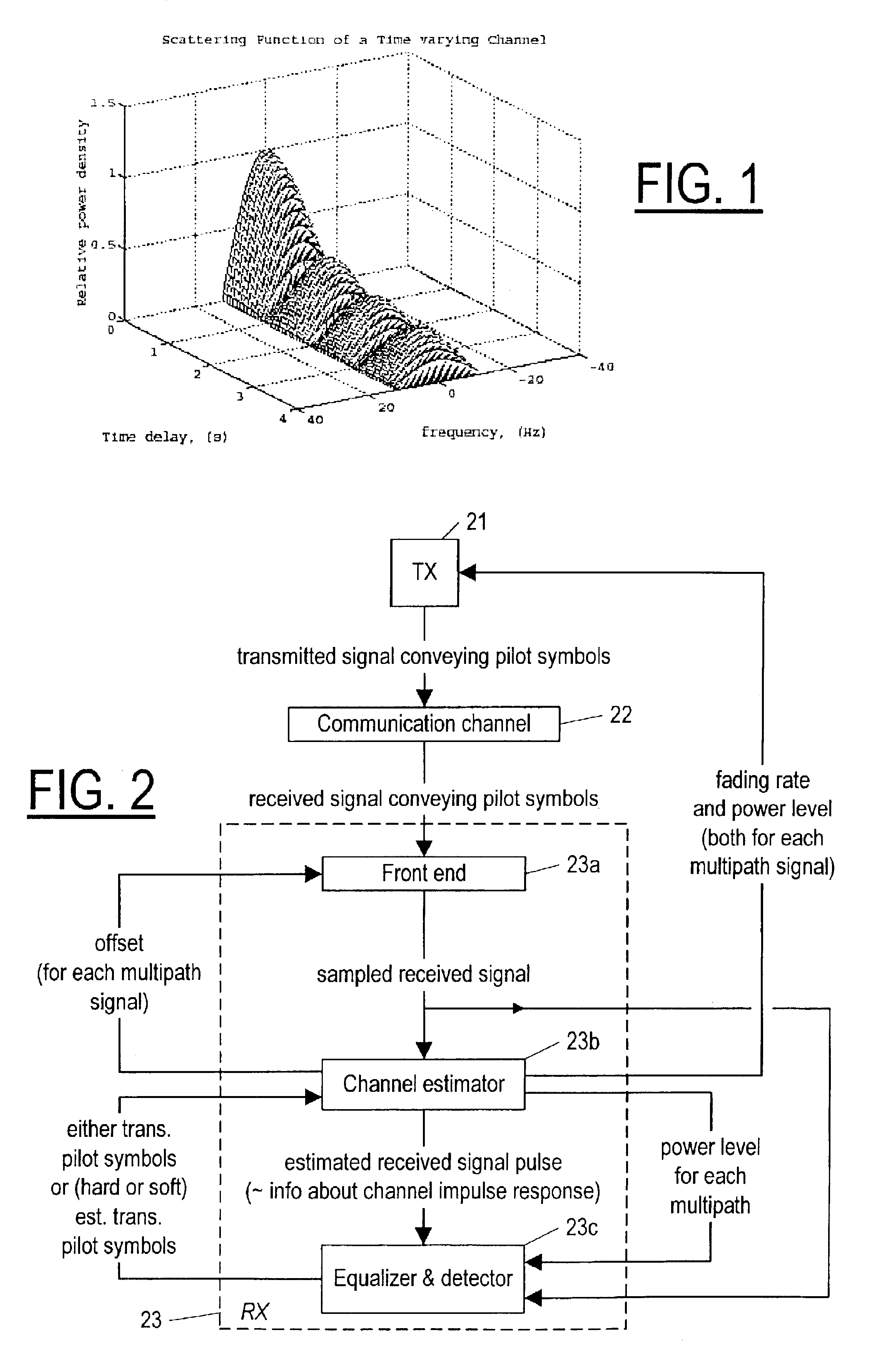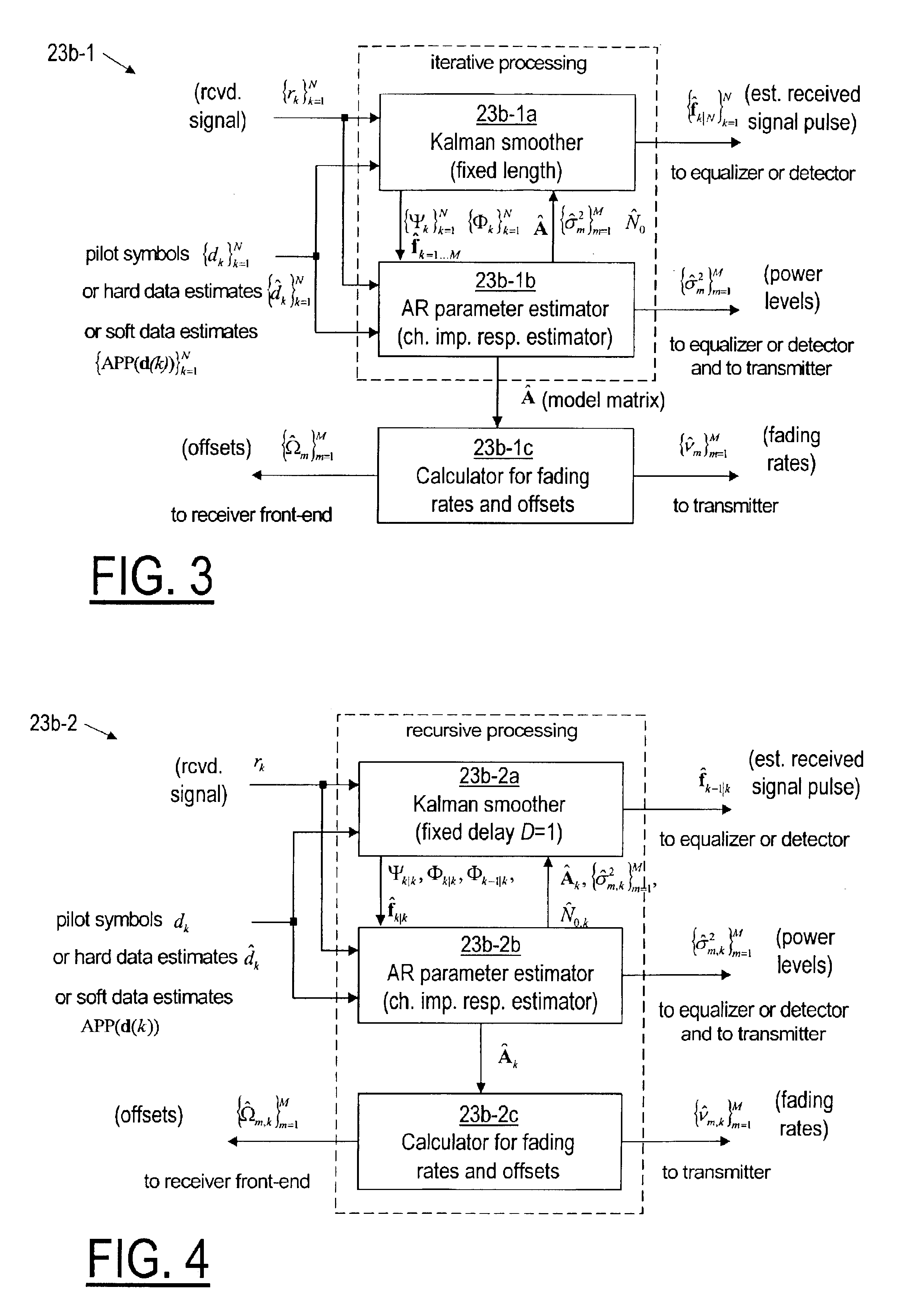Method and apparatus for estimating carrier frequency offset and fading rate using autoregressive channel modeling
a carrier frequency offset and channel modeling technology, applied in the field of advanced algorithms for radio receivers, can solve the problems of transmitters at base stations or mobile terminals that are typically fading dispersive communication channels, and transmitters and receivers that are limited in adaptivity to varying communication channel conditions
- Summary
- Abstract
- Description
- Claims
- Application Information
AI Technical Summary
Problems solved by technology
Method used
Image
Examples
Embodiment Construction
Referring now to FIG. 2, according to the invention, a receiver (RX) 23 receives a signal conveying pilot symbols transmitted by a transmitter 21 over a communication channel 22, assumed to be a fading dispersive communication channel, and then, using a predetermined parametric model that is preferably an autoregressive model, the receiver 23 estimates, for each of possibly several resolvable multipath signals, a fading rate, an offset, and a power level, as described below. The receiver 23 includes a front end 23a, a channel estimator 23b, and a module 23c that preferably includes an equalizer and a detector, but at least includes a detector. The front end 23a provides to the channel estimator 23b and to the module 23c samples of the received signal. The detector component of the equalizer and detector module(s) 23c provides to the channel estimator 23b either the a priori known pilot symbols (training symbols) or (hard or soft) estimated transmitted pilot symbols. Using the pilot ...
PUM
 Login to View More
Login to View More Abstract
Description
Claims
Application Information
 Login to View More
Login to View More - R&D
- Intellectual Property
- Life Sciences
- Materials
- Tech Scout
- Unparalleled Data Quality
- Higher Quality Content
- 60% Fewer Hallucinations
Browse by: Latest US Patents, China's latest patents, Technical Efficacy Thesaurus, Application Domain, Technology Topic, Popular Technical Reports.
© 2025 PatSnap. All rights reserved.Legal|Privacy policy|Modern Slavery Act Transparency Statement|Sitemap|About US| Contact US: help@patsnap.com



